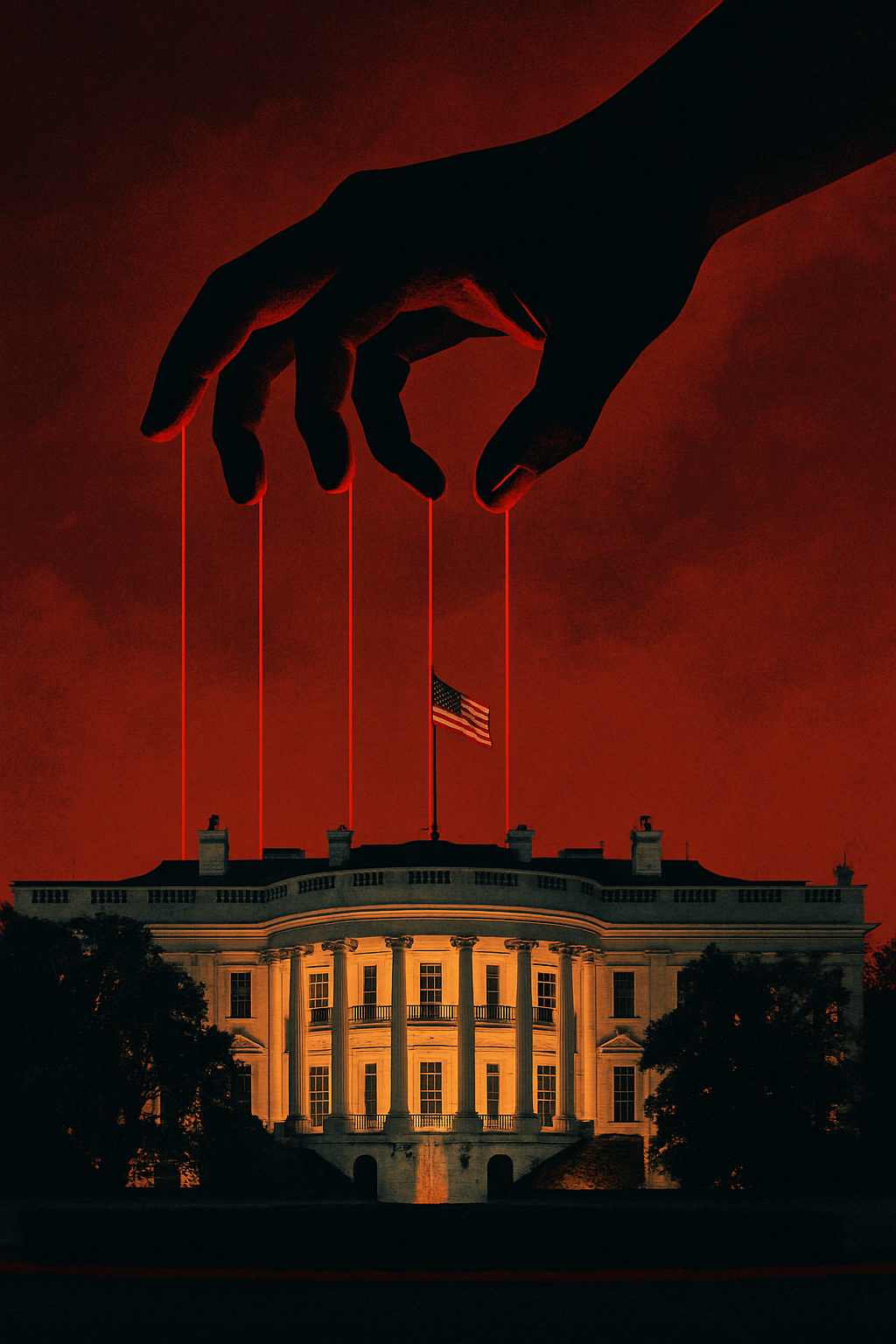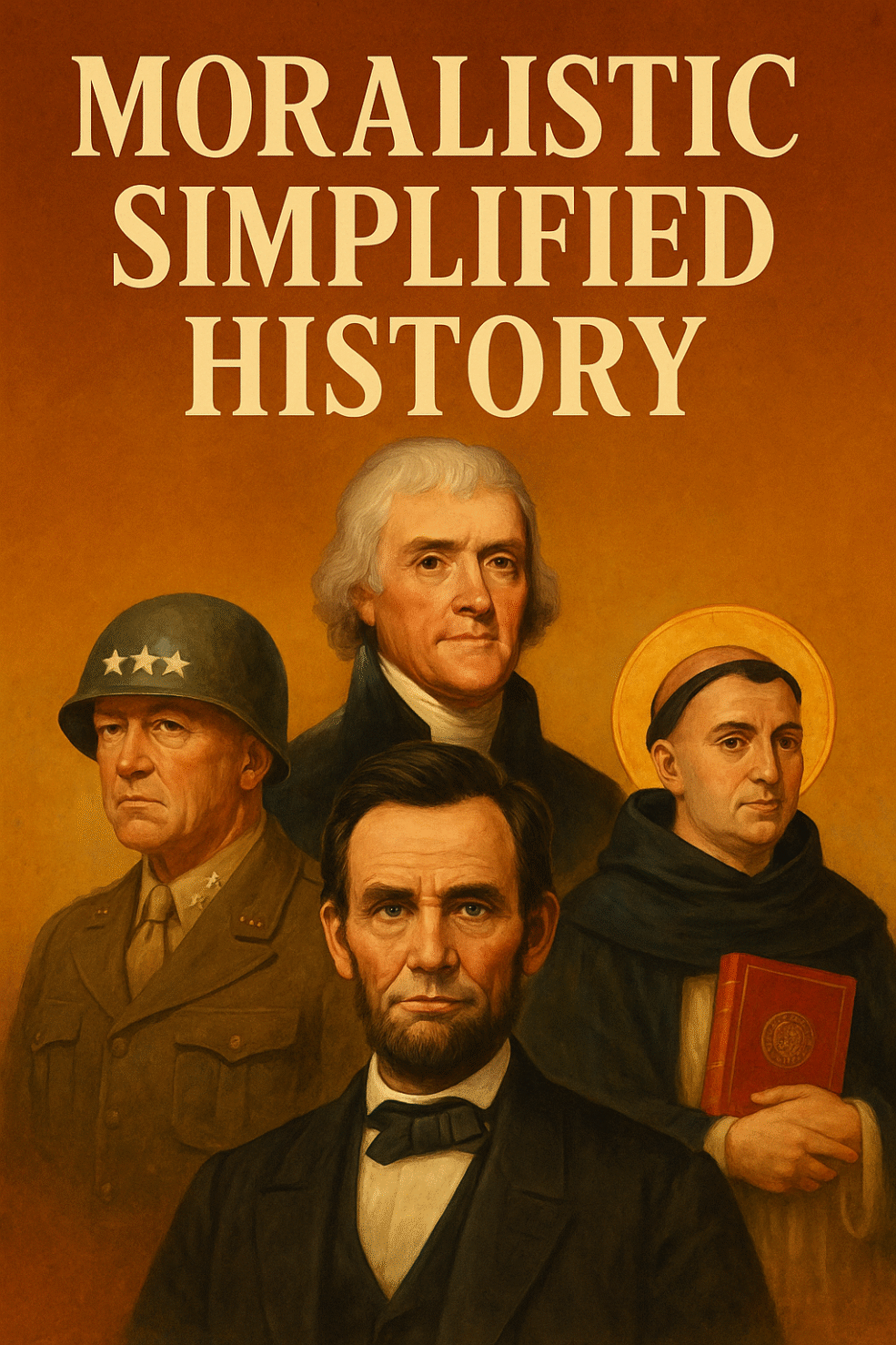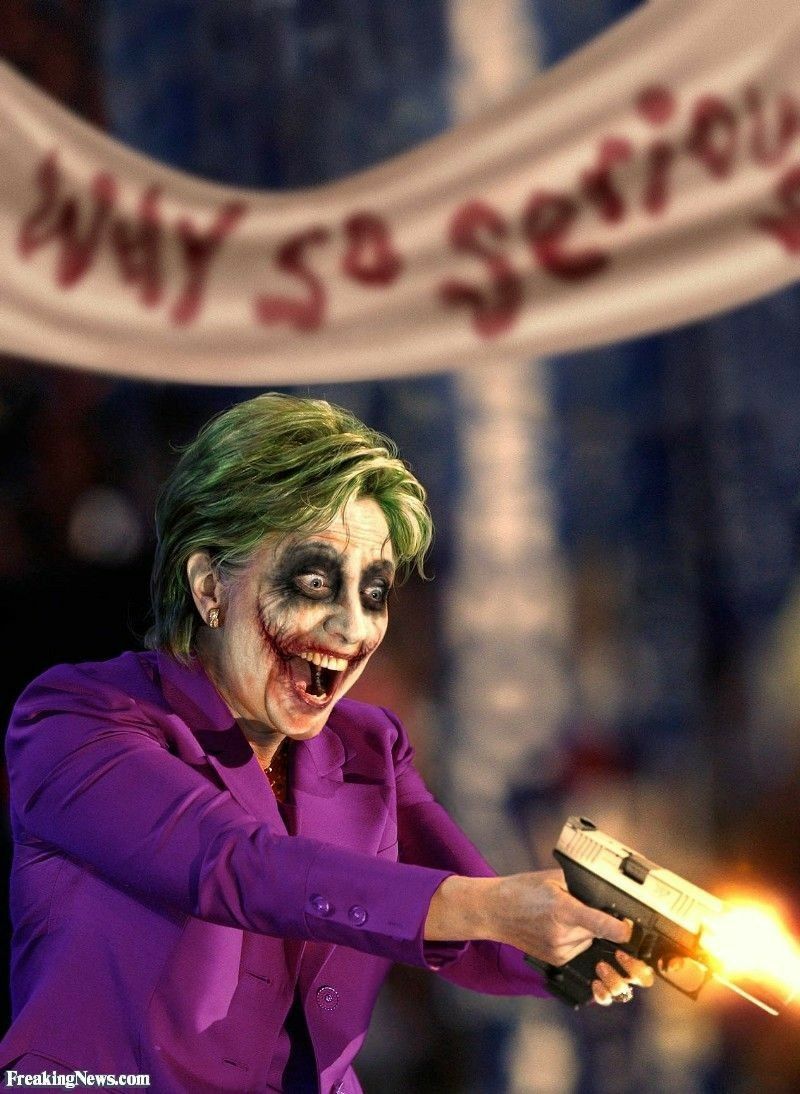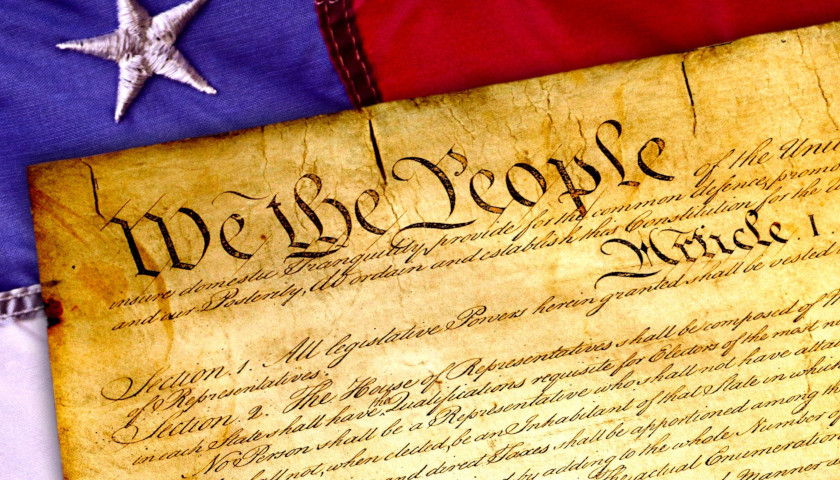Donald J. Trump is the most polarizing political figure in modern American history, and arguably, in global politics. He didn’t just win the presidency; he redefined the Republican Party under a brand, Make America Great Again (MAGA), that Bill Clinton and Al Gore once used without controversy. When Trump used it, the left called it fascist.
He’s also more of a ‘Teflon Don’ than was John Gotti, the man who first earned the nickname. Gotti won court case after court case before Rudy Giuliani finally put him behind bars. Trump, by contrast, has weathered scandal after scandal, many of them manufactured, and emerged stronger.
From Russian collusion to impeachment over a phone call, from January 6 to his indictment and mug shot, each supposed scandal only strengthened his brand.
Still the media tried to take Trump down.
Meanwhile, Joe Biden’s physical and mental decline may be the most consequential scandal in American history, and yet the media refuses to treat it as news. Even insiders in Biden’s own White House admitted that a team “far more competent than either Biden or Harris” was running the country. When Biden was later diagnosed with stage IV prostate cancer that had metastasized to the bone, questions naturally followed. How did his doctors miss it during routine evaluations? Or, if they didn’t, why was the public not told?
Perhaps more importantly: if there was a team “far more competent than either Biden or Harris,” why didn’t they run for office in 2024? The Democrats knowingly nominated unfit candidates and the media never mentioned it.
Somehow, none of this sparked serious coverage. There were no breathless headlines or calls for accountability. The press, once styled as democracy’s watchdog, didn’t just fail to bark, it didn’t even whimper.
So what happened? How did we reach a point where every Trump misstep becomes a media firestorm, while the political and physical collapse of the sitting president is quietly ignored? How can we have a team nobody elected running the country during crisis, while Biden is on vacation and Harris is on the campaign trail?
The answer isn’t chaos. It’s control.
There was a time when political opponents disagreed without dehumanizing each other, when journalists sought truth rather than narrative, and when presidents actually governed the executive branch. That time is gone.
The collapse of political decorum didn’t begin with Trump. It began when America’s cultural, media, and intelligence institutions stopped acting like referees and started behaving like rulers.
It started during the Vietnam War, when the press turned decisively against U.S. foreign policy and the CIA began treating the American people not as citizens to be served, but as a population to be managed.
This is the story of how that quiet coup unfolded.
The Death of Decorum and the Birth of Asymmetry
Political mudslinging is nothing new. Hamilton and Burr ended their feud with a pistol. Andrew Jackson’s opponents accused his wife of bigamy. John Adams and Thomas Jefferson ran one of the dirtiest campaigns in U.S. history: Adams was called a hermaphrodite and a monarchist; Jefferson, an atheist and a radical Jacobin. Abraham Lincoln was mocked as a backwoods ape. Grover Cleveland faced chants of “Ma, Ma, where’s my Pa?” over an alleged illegitimate child. Ulysses S. Grant was branded a drunk and a butcher. Harry Truman was dismissed as a crude machine hack. Lyndon Johnson’s infamous “Daisy” ad implied Barry Goldwater would start a nuclear war.
The media has always reveled in scorched-earth politics. What’s changed isn’t the volume of attacks, but the asymmetry in how they’re delivered and against whom. Mockery has become one-directional. Narrative framing no longer aims to inform but to control.
Imagine Hamilton and Burr, but only Burr is allowed to speak in public. Imagine if Hamilton agreed to a duel, only Burr got to use a pistol.
Hamilton might have lived longer, refusing to play by those rules, but The Federalist Papers would never have spread, and the Constitution might never have been ratified.
This is where we are today, 221 years later.
During the Vietnam War, the media coalesced around a moral framing that placed all dissent on the left and all villainy on the right. Walter Cronkite’s turn against the war marked a breaking point: the press stopped reporting and started deciding. Even though Lyndon Johnson had escalated the war, Nixon was blamed for it. The press took the war Johnson started and made it Nixon’s legacy.
From that point on, the press and intelligence services stopped being observers. They became political actors.
Nixon and the CIA: The First Takedown
Nixon had always distrusted the CIA, and with good reason: he saw them as a self-perpetuating class of power brokers with no loyalty to voters or to the presidency itself. When he created the “Plumbers” to stop leaks, he unknowingly employed CIA operatives who may have been acting on someone else’s orders.
It’s worth noting that the CIA was smuggling heroin into the United States during the Vietnam War, as historian Alfred McCoy documented in detail in his book The Politics of Heroin. The drug trade funded black-budget operations.
If the CIA was financing covert activity in Vietnam through heroin smuggling, as McCoy convincingly shows, it raises a chilling question: what are they funding today?
I’ll answer that later in this article.
The Watergate break-in was amateurish to the point of suspicion. The fallout, fueled by leaks from high-ranking FBI and CIA-connected insiders, was immediate and catastrophic. Nixon, whose real crime was challenging the intelligence community’s dominance, became the first American president removed not by voters, but by a coordinated institutional strike.
Nixon didn’t even know about the break-in until after it happened. He was, however, a deeply paranoid man, and in the middle of an election, he was easy to manipulate into a coverup.
This is no longer speculation. Former Congressman Curt Weldon has publicly confirmed that the CIA acted to bring Nixon down. If true, Watergate wasn’t the start of corruption. It was the end of presidential control.
Weldon, incidentally, is no fringe voice. He represented Pennsylvania’s 7th congressional district from 1987 to 2007. He was Vice Chairman of both the House Armed Services Committee and the House Homeland Security Committee. He’s a national security expert with deep institutional ties, and he knows exactly what he’s talking about.
Ford, Reagan, and the Mockery Machine
After Nixon came Ford, a man who had been a star athlete at the University of Michigan, graduated near the top of his class at Yale Law, and served honorably in World War II, yet to the American public, he was remembered not for any of that, but for tripping once on an airplane stair and being portrayed as a bumbling oaf in a Saturday Night Live skit.
Chevy Chase’s impersonation of Ford redefined him, and is used today as a textbook example of how comedy can impact politics. We’ll never know whether Ford would have won the election without that skit, but many political insiders, on both the right and left, believe Chevy Chase cost him the presidency. The portrayal was false, but it didn’t matter. It was entertaining, and that proved more powerful than the truth.
Reagan, a two-term governor and gifted communicator, reshaped the conservative movement around a rebirth of liberty, rebuilding national morale in the process. Yet the media cast him as a simpleton, a washed-up actor unable to think beyond a script. “Bedtime for Bonzo,” a movie he co-starred in with a monkey, became an anti-Reagan slogan mocking both his age and intellect.
In spite of it all, Reagan won in a landslide and dismantled the Soviet Union without firing a shot. But to elite institutions, he remained the doddering fool who just “got lucky.”
George H. W. Bush was painted as out of touch, despite serving as CIA Director, UN Ambassador, envoy to China, and Vice President. His son, George W. Bush, was labeled both a war criminal and a moron. Despite degrees from Yale and Harvard, he was reduced by the media to “Bushisms” and shoe-throwing memes. To his credit, Bush leaned into being underestimated and used it as political camouflage, but he was far from dumb.
The point is facts no longer mattered. Mockery worked. The joke became the truth, or at least, the public’s version of it.
Meanwhile, every Democrat, no matter how corrupt, incoherent, or ineffective, was elevated. Clinton was slick, not predatory. Obama was professorial, not aloof. Biden was framed as grandfatherly and stable, even as he lost his grip on reality in front of the public lens. The press never made jokes about Biden’s stumbles the way they did Ford’s.
That’s because mockery isn’t about humor, but hierarchy. It signals who is safe to ridicule and who is off-limits. And in doing so, it reveals who holds cultural power and who does not.
By the time Trump arrived, it was painfully clear: the media, academia, and intelligence agencies had aligned with the political left. Mockery had become a weapon of narrative enforcement. The Republican Party wasn’t just the opposition anymore. It was the designated villain in a moral play where reality was optional.
The Permanent Bureaucracy and the Real Chain of Command
Trump’s first term exposed a reality decades in the making: the president no longer runs the country, or at least not beyond the guardrails set by the intelligence agencies and a bureaucracy that serves itself.
In some cases, agencies simply ignored him. Others went further and actively worked to undermine him. Bureaucrats within federal agencies drafted legal arguments and passed them to outside activist groups, often NGOs funded by taxpayers through USAID. Those groups then sued the agencies with the very arguments those agencies had written. Once in court, the lawsuits were funneled into politically favorable districts with activist judges who issued consent decrees, compelling agencies to do what they wanted all along – without congressional approval or executive oversight.
The tactic is called “sue and settle,” and it flourished under Trump. Even after he ordered rollbacks of Obama-era environmental policies, NGOs like the Sierra Club and Earthjustice sued the EPA using procedural technicalities. Despite executive orders aimed at curbing these lawsuits, career staff at the DOJ and EPA slow-walked compliance and in some cases reversed positions once the cases landed before sympathetic judges. The Clean Power Plan, supposedly shelved under Trump, continued to be defended by EPA holdovers. Court filings moved forward under his name, even when they directly contradicted his agenda.
When Trump froze diversity training rooted in critical race theory, internal DOJ lawyers and civil rights groups sued the government for violating speech rights, filing a lawsuit they knew would succeed once Biden reversed the policy.
In effect, agencies used activist lawsuits to override Trump’s executive orders, claim new powers through consent decrees, and expand regulatory authority never granted by Congress, all while blaming the courts.
Trump’s presidency became a tug-of-war between a duly elected outsider and the intelligence agencies, media conglomerates, and bureaucratic operatives who saw him as a threat to their control. He did something no one else had: he pulled the Republican Party outside CIA influence. And for that, the entire establishment turned on him.
Hunter Biden, the Laptop, and the Narrative Machine
In October 2020, 51 former intelligence officials signed a letter calling the Hunter Biden laptop “Russian disinformation.” They had no evidence. In fact, the FBI had already authenticated the laptop, so they knew it was real. They lied. The media ran with the lie, and Big Tech censored the story. Joe Biden even cited the letter during a debate to make it appear that Trump was pushing a wild conspiracy theory.
Later, the public learned the laptop was real.
The contents revealed a sprawling network of foreign business dealings implicating not only Hunter, but Joe Biden and multiple members of the Biden family. Buried among personal files and drug-fueled escapades (salacious but largely irrelevant) were emails, contracts, wire transfers, and calendar entries detailing payments from oligarchs and state-connected companies in Ukraine, China, Kazakhstan, and Romania.
These payments were funneled through shell companies and routed across multiple Biden family members, often justified with vague consulting arrangements or board appointments in industries where Hunter had no qualifications. Joe Biden wasn’t just adjacent to the activity. He met with Hunter’s business partners. He was referenced in emails as “the big guy” set to receive a cut. He left voicemails acknowledging his son’s Chinese business ventures, contradicting years of denial. Treasury reports flagged over 150 suspicious transactions involving Biden family accounts.
This wasn’t just grift. It was systemic, organized influence-peddling, buried beneath layers of plausible deniability and shielded by a media establishment that refused to investigate.
Just as with Hillary Clinton’s emails, the press focused all its energy on the existence of a device rather than its contents. Clinton’s private server wasn’t a scandal because it was private. It was a scandal because it was used to transmit and delete classified information, hidden from public record, and then scrubbed after a congressional subpoena. The laptop and the emails were just containers. The contents were the story.
The Clinton emails revealed the DNC rigging its primary against Bernie Sanders, State Department favors for Clinton Foundation donors, and the destruction of evidence under subpoena. The Hunter laptop revealed foreign governments buying access to the Vice President of the United States. In both cases, the media buried the real story by pretending the only question was whether the hardware was legitimate. The evidence – money, favors, meetings, and influence – was plain to see for anyone willing to look. Most journalists weren’t.
John Podesta’s leaked emails included a transcript of a speech Hillary Clinton gave to Goldman Sachs in which she admitted to having two platforms: one for public consumption, and another for what she would actually do once elected. The real platform, she said, was not for public view.
Hillary Clinton lost anyway. But Joe Biden didn’t. Exit polling later showed that if the Hunter Biden laptop story had been widely reported, he likely would have lost the 2020 election.
None of this was accidental. It was a coordinated campaign of election interference, run by former intelligence operatives, protected by media allies, and enforced by Big Tech platforms.
Time Magazine even ran an exposé celebrating the effort. The article, titled “The Secret History of the Shadow Campaign That Saved the 2020 Election,” was published on February 4, 2021, by Molly Ball. It described how institutional actors across the country worked behind the scenes to control the flow of information, reframe the narrative, and ensure the outcome. Ball called them “a well-funded cabal.”
They didn’t deny the manipulation. They bragged about it.
Biden’s Decline and the Quiet Reassignment
After years of visible decline, Biden’s own administration finally said the quiet part out loud: a team “far more effective than either Biden or Harris could be” was running the country.
Then came the cancer.
Stage IV prostate cancer with bone metastasis doesn’t appear overnight, especially not in someone under constant medical supervision. It is not possible that Biden developed such advanced cancer entirely during his presidency, unless it wasn’t naturally developed at all.
His collapse was politically useful. By the end, he could barely speak coherently and had become a walking reminder that the system no longer followed the Constitution in any meaningful way.
Former Congressman Curt Weldon has publicly stated that the CIA possesses technology capable of inducing fast-acting cancers. The Church Committee confirmed cancer weaponization research decades ago. That kind of capability doesn’t vanish.
Biden’s illness emerged precisely when he became too embarrassing to protect. That’s not a conspiracy theory. It’s a pattern.
To be clear, I’m not accusing the CIA of assassinating Joe Biden through a fast-spreading cancer (and nor is he dead yet, at the time of this writing). I’m saying the only two possibilities are that he already had the disease when he ran for the Presidency, or that it wasn’t natural.
Either possibility is damning.
Why Republicans Were Always the Lesser Partner
If the intelligence community had influence over both parties, why was the Republican Party treated with such consistent suspicion, even before Trump?
The answer is alignment, not animosity.
Beginning in the 1960s, the Democratic Party drifted toward a worldview that increasingly mirrored the goals of the intelligence and administrative state: globalist, technocratic, expert-driven, culturally fluid, and functionally anti-democratic. These values were easier to mold, easier to sell through media narratives, and more compatible with an expanding national security apparatus.
Republicans, by contrast, remained rhetorically tied to the Constitution: limited government, national sovereignty, individual liberty, and the separation of powers. Those ideas resist central control and oppose unaccountable power.
A vetted Republican, someone who played by the rules, was tolerated. Occasionally, they were even useful. Letting the “wrong” side win once in a while helped preserve the illusion of choice. But true allegiance was reserved for the party whose platform pushed the country further into managed governance and further away from constitutional restraint.
The intelligence regime didn’t begin by targeting Republicans. It began by cultivating the side it could shape, and managing the side it couldn’t.
The moment that management failed, the mask came off.
Trump and the Permissible Assassination Culture
While Biden was shielded, Trump was targeted. Literally.
There were at least two credible assassination attempts that we know of against Trump in 2024, including one in Butler, Pennsylvania, where he was shot in the ear. The media quickly buried the stories.
In the Butler case, the shooter, Thomas Matthew Crooks, was on a rooftop with a clear line of sight, only 148 yards away from where Trump was speaking. The Secret Service reportedly had him in sight for over a minute before he fired. Crooks was able to fire eight rounds before agents returned fire.
There is no public evidence suggesting the Secret Service was ordered to let the shooter fire first. But as a Marine with tactical training, I struggle to understand how a shooter at that distance was allowed the first shot. A 148-yard shot is trivial for anyone with basic rifle training. It is truly remarkable that Trump survived.
In the brief window the story received attention, the tone of media and comedic coverage was chilling. The unspoken message was clear: ‘Political violence is never okay, but it’s a shame the guy missed.’
Former FBI Director James Comey tweeted “86 47.” In common usage, “86” means to eliminate. “47” refers to Trump, the 47th President. Comey will not be charged with incitement. He knows how to toe the line without crossing it, but he knew what he was doing.
Comey wasn’t alone. A survey conducted by the Network Contagion Research Institute and Rutgers University’s Social Perception Lab found that 55 percent of self-identified left-of-center respondents believed assassinating Trump would be at least “somewhat justified.” That was before Comey’s tweet, which many interpreted as agreement.
From Kathy Griffin’s beheading photo to coordinated social media purges to bureaucrats bragging about sabotaging Trump from within his own administration, the culture of permissible violence against him is not fringe. It is institutional.
Nor is the violence only directed against Trump. Since the death of George Floyd, arson, looting, and violence have become excused on the left to a degree that risks normalization. Calling a riot ‘mostly peaceful’ while buildings burn is absurd. It’s like calling a flight ‘mostly safe’ because no one died until impact.
In a culture where metaphor is policed, except when aimed at Trump, even silence is branded as violence when it comes from the right, yet we are told that right-wing extremism is the threat.
Epstein, Blackmail, and the Preservation of Leverage
Jeffrey Epstein wasn’t just a trafficker. He was a kompromat merchant. The FBI raided his home and found safes filled with blackmail material, labeled and dated. Then they left it all unguarded for 48 hours.
The FBI should have left agents to secure the safe while obtaining a warrant from one of the many judges they routinely work with. That is standard protocol, unless someone else (such as an intelligence service) wanted the evidence.
The materials weren’t ignored. They were claimed.
Those files weren’t destroyed because they remain useful. They are a control mechanism, not evidence for prosecution. If Pam Bondi, despite her legal standing and media exposure, can’t release them, it’s because she doesn’t really hold the power to do so. Not only that, but if Trump couldn’t force their release, he didn’t hold the power either.
The CIA held that power.
I don’t believe Epstein killed himself, but had he gone to trial, facing life in prison, his defense would likely have been entrapment, which would have been a big problem for whatever intelligence service he was working for. Now he’s dead, and the problem has conveniently disappeared.
The fall of figures like ‘Diddy’ Combs, who allegedly trafficked in similar operations, suggests that the Epstein network was not an anomaly. It was a template.
USAID Comes Home: Domestic Regime Change
For decades, the CIA has used the U.S. Agency for International Development (USAID) as a front for regime change abroad. The method is always the same: fund “civil society” groups, pump money into media outlets, stir up opposition under the guise of democracy promotion, and collapse a sitting government through narrative warfare, not with soldiers, but with storylines.
It’s a soft coup strategy dressed in idealism. And it works.
USAID-funded NGOs have helped topple regimes in Iran (1953), Chile (1973), Serbia (2000), Ukraine (2004 and again in 2014), and countless others. Each time, the playbook is refined. Each time, the illusion of grassroots revolution is preserved, even when the protests are funded and orchestrated from the United States.
Now those tactics are being used here.
Since 2020, the same architecture – media control, NGO coordination, big tech censorship, protest funding, and narrative synchronization – has been deployed inside the United States. “Democracy promotion” has become domestic population control. The difference is only in geography.
This is what happens when the tools of foreign intervention are turned inward. The same intelligence networks that once destabilized sovereign nations in the name of freedom are now targeting Americans who dissent from the approved script.
This is not institutional decay. This is regime change by design – and this time, the regime being overthrown is our own.
The Inversion of Power and the New American Regime
The president doesn’t run the executive branch.
Pam Bondi doesn’t control the Epstein files.
The DOJ doesn’t control the FBI.
Congress doesn’t even control the CIA.
The intelligence community runs the show, deciding who gets exposed, who gets indicted, who gets silenced, and who gets sick. These people aren’t bound by elections and they aren’t checked by oversight. They are no longer even trying to hide it.
Let me say something more speculative: the CIA may now exert effective control over BlackRock, State Street, and Vanguard, and, through them, over more than $100 trillion in assets. If that is true (read that article before you call it pure conjecture), through those organizations it controls the world’s economy.
This is not a democracy. This is a managed state, and the management team doesn’t work for us.
Trump didn’t break the system. He revealed it. He governed without their permission. And for that, he was marked.
Curt Weldon called it a quiet coup. That was generous.
This is a regime. The coup already happened. The only question left is whether the people still have the courage to name it.
If we can’t even speak these words aloud, then we’re not citizens anymore.
We’re subjects.
And the intelligence services didn’t seize control.
We gave it to them.
Appendix: What’s Documented, What’s Inferred, and What’s Speculative
This article presents a cohesive narrative built from public records, official testimony, declassified documents, and observable institutional behavior. Some elements are factual, some are pattern-based inferences, and others are explicitly speculative, but all reflect a consistent attempt to understand how power actually operates in America today.
To help readers separate what is known from what is inferred, the following distinctions are offered:
Documented and Verifiable
These claims are supported by public records, official documentation, or mainstream media confirmation:
- CIA regime change operations funded through USAID (Iran 1953, Chile 1973, Ukraine, etc.)
- Church Committee confirmation of CIA cancer weaponization research and political assassination plots
- Curt Weldon’s public testimony regarding Able Danger and intelligence obstruction
- The Hunter Biden laptop and the intelligence letter falsely labeling it Russian disinformation
- Watergate break-in operatives with CIA backgrounds (e.g., E. Howard Hunt)
- Secret Service failures surrounding real assassination attempts against Donald Trump
- Epstein’s blackmail materials being found by the FBI and then inexplicably left unsecured
- Pam Bondi’s appointment and ongoing failure to release the Epstein client files
Pattern-Based Inference (Plausible, Not Proven)
These are logical conclusions drawn from multiple verified facts or long-term patterns, but lack definitive documentation:
- The Epstein blackmail archive was quietly claimed and retained by intelligence services
- That Biden’s illness may have been medically induced to remove him as a political liability
- Sean “Diddy” Combs may have operated in a similar capacity to Epstein, and is now being neutralized because he is no longer useful or compliant
- The CIA is exerting effective control over both public and private institutions through influence, not formal governance
- The U.S. intelligence playbook used for regime change abroad is now being deployed domestically
Speculative but Framed as Hypothesis
These are explicitly posed as questions or possibilities, not confirmed truths:
- That Biden’s illness was medically induced to force him out of the public eye
- That certain assassination attempts against Trump were internally facilitated or deliberately mishandled
- That the intelligence community preserves blackmail as a strategic asset rather than as prosecutable evidence
- That a functional shadow government now directs policy across administrations, regardless of election outcomes
Conclusion:
The line between fact and inference matters—but so does pattern recognition. This appendix does not disclaim the argument. It invites scrutiny, encourages investigation, and clarifies what is observed, what is reasoned, and what is suspected based on consistent institutional behavior.
If even half of what is inferred proves true, we are not living under the republic we were promised.











Leave a Reply